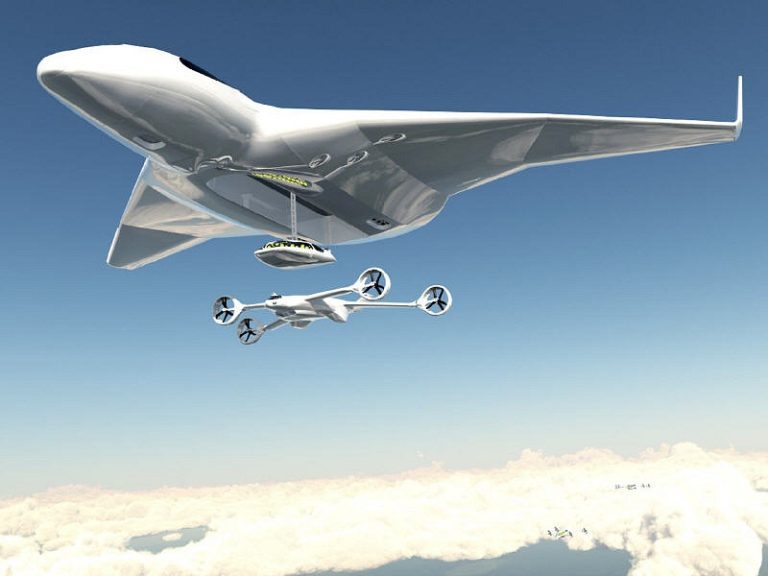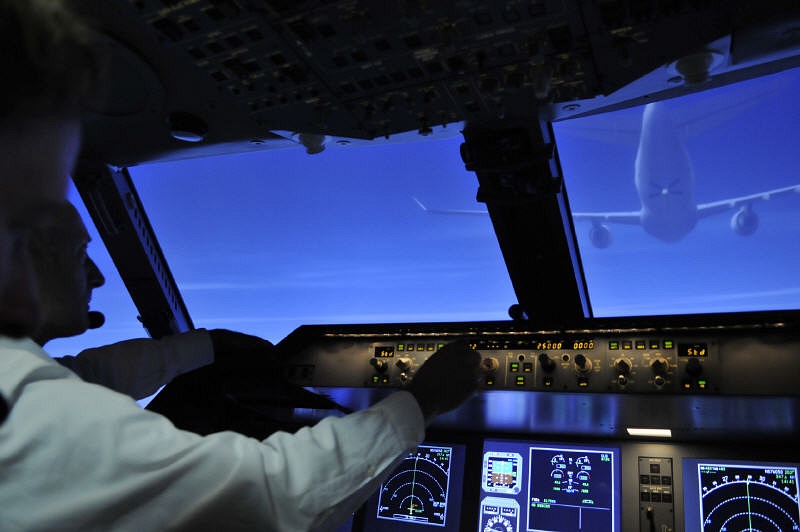As part of the European research programme RECREATE Dr. Gianfranco La Rocca (AE) explored the benefits of refuelling of passenger aircraft during flight.
To take fuel up in the air requires even more fuel. For long-range airliners, such as the Airbus 330-200, up to half of the take-off weight is kerosene. For short-range missions, the weight percentage of fuel is closer to 30%.
To be able to store 50 to 100 tonnes of fuel, transatlantic aircraft are necessarily bulky and large, and the size of their engines is dictated by the capability to take off at maximum weight. Such supersized aeroplanes are inefficient on shorter ranges.
One of the ideas that the European cruiser-feeder programme RECREATE (REsearch on a CRuiser-Enabled Air Transport Environment) explores is the feasibility of slimmer carriers for 250 passengers with enough fuel for a range of 4,500 kilometres. On transatlantic flights, special flying tankers will need to refuel them halfway over the Atlantic.
“There could be a fleet of flying tankers stationed halfway the Atlantic. These specially designed feeders could be much smaller and almost twice more fuel efficient than the current stratotankers, which are converted airliners,” said La Rocca, from the Faculty of Aerospace Engineering.
La Rocca has worked on this with his PhD candidate Mo Li and two MSc students, Huub Timmermans (now working at NLR) and Peter van der Linden (now working at Fokker Landing Gear).
“Once in the air, the feeder will approach and refuel the passenger aircraft on the fly while maintaining constant cruise speed. The tanker will transfer some 14.5 tonnes of kerosene in about 20 minutes of time (including the approach and separation manoeuvre). It then decouples to refuel another two cruisers on the same transatlantic route,” he said.
It’s a far vision all right, since neither the feeders nor the midrange cruisers exist. Still, La Rocca has calculated that the concept would be 15% more fuel efficient (including the fuel used to operate the tankers) than today’s transatlantic flights. With existing tankers, the fuel savings would be around 10%. La Rocca and Li presented their results at a large international conference in St. Petersburg in September and a symposium in Toulouse in November 2014.
Refuelling in flight, a well-known concept in military aviation, is known as one of the most dangerous aircraft operations. To manoeuvre an aircraft within about 10 metres of the tanker, and to keep it stable despite the large flow perturbations is not easy. There are lots of online videos of spectacular fails. Most of which fortunately end without casualties.
In order to make mid-air refuelling safer, La Rocca and colleagues decided to change the typical manoeuvre of the tanker leading and the other aircraft coming up from behind. Instead, they have the tanker approaching the cruiser from behind and steering the forward-pointing refuelling boom up towards it.
“In case of accidental detachment of the boom or a part of it, the passenger aircraft would not be affected. Also, airline pilots would not need to be trained to fly the complex approach manoeuvre, and the passengers would not be affected by those manoeuvre accelerations,” said La Rocca.

Last October, two flight simulators – one from NLR and the other from DLR in Braunschweig – were coupled to test the aerial refuelling procedure. All went well.
Computational tests of the forward extended boom made of lightweight material and controlled with four rudders, or vanes (called ruddervators,) has shown that the boom is both statically and dynamically stable. In other words, it won’t break and it won’t start fluttering in the wind.
The next steps are to figure out how to integrate the boom in a tanker aircraft and to develop an automatic control system to operate the refuelling boom to make coupling easier and more secure – a prerequisite for airworthy operations.
The RECREATE research programme looks even further ahead. It also explores passengers changing flight in mid-air. Large aircraft (cruisers) could stay airborne as small carriers (feeders) take up and down the passengers. More details on the cruiser-feeder website.



Comments are closed.